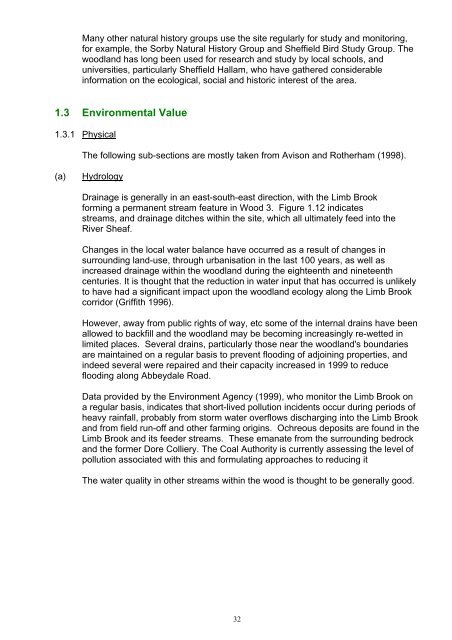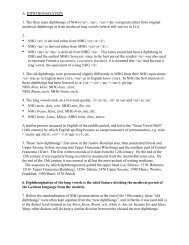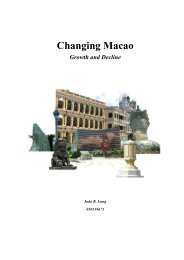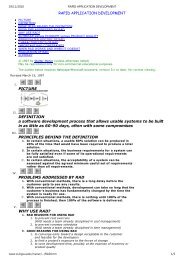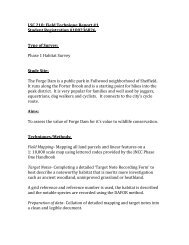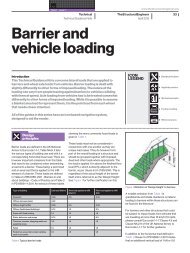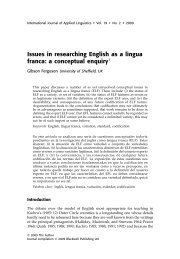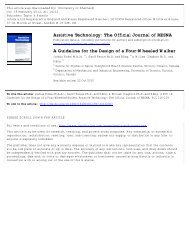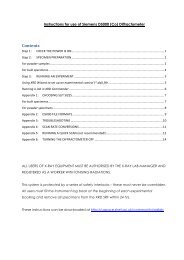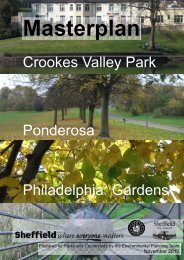eccelsall woods management plan.pdf - University of Sheffield
eccelsall woods management plan.pdf - University of Sheffield
eccelsall woods management plan.pdf - University of Sheffield
Create successful ePaper yourself
Turn your PDF publications into a flip-book with our unique Google optimized e-Paper software.
Many other natural history groups use the site regularly for study and monitoring,<br />
for example, the Sorby Natural History Group and <strong>Sheffield</strong> Bird Study Group. The<br />
woodland has long been used for research and study by local schools, and<br />
universities, particularly <strong>Sheffield</strong> Hallam, who have gathered considerable<br />
information on the ecological, social and historic interest <strong>of</strong> the area.<br />
1.3 Environmental Value<br />
1.3.1 Physical<br />
The following sub-sections are mostly taken from Avison and Rotherham (1998).<br />
(a) Hydrology<br />
Drainage is generally in an east-south-east direction, with the Limb Brook<br />
forming a permanent stream feature in Wood 3. Figure 1.12 indicates<br />
streams, and drainage ditches within the site, which all ultimately feed into the<br />
River Sheaf.<br />
Changes in the local water balance have occurred as a result <strong>of</strong> changes in<br />
surrounding land-use, through urbanisation in the last 100 years, as well as<br />
increased drainage within the woodland during the eighteenth and nineteenth<br />
centuries. It is thought that the reduction in water input that has occurred is unlikely<br />
to have had a significant impact upon the woodland ecology along the Limb Brook<br />
corridor (Griffith 1996).<br />
However, away from public rights <strong>of</strong> way, etc some <strong>of</strong> the internal drains have been<br />
allowed to backfill and the woodland may be becoming increasingly re-wetted in<br />
limited places. Several drains, particularly those near the woodland's boundaries<br />
are maintained on a regular basis to prevent flooding <strong>of</strong> adjoining properties, and<br />
indeed several were repaired and their capacity increased in 1999 to reduce<br />
flooding along Abbeydale Road.<br />
Data provided by the Environment Agency (1999), who monitor the Limb Brook on<br />
a regular basis, indicates that short-lived pollution incidents occur during periods <strong>of</strong><br />
heavy rainfall, probably from storm water overflows discharging into the Limb Brook<br />
and from field run-<strong>of</strong>f and other farming origins. Ochreous deposits are found in the<br />
Limb Brook and its feeder streams. These emanate from the surrounding bedrock<br />
and the former Dore Colliery. The Coal Authority is currently assessing the level <strong>of</strong><br />
pollution associated with this and formulating approaches to reducing it<br />
The water quality in other streams within the wood is thought to be generally good.<br />
32


